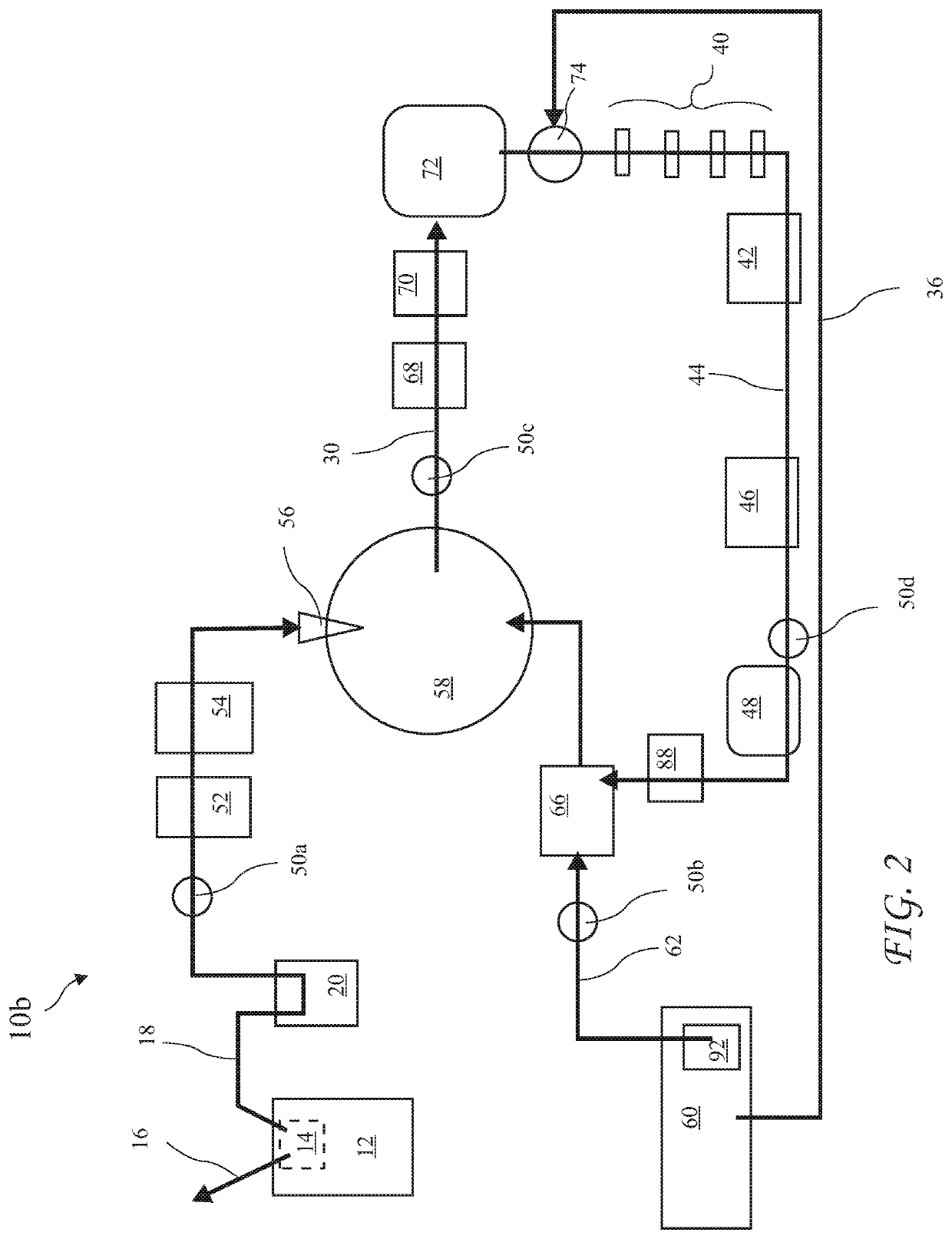Hydrogenated liquid fuel production and induction system for gasoline and diesel internal combustion engines
a technology of liquid fuel and hydrogen, which is applied in the direction of combustion engines, charge feed systems, non-fuel substance addition to fuel, etc., can solve the problems of not being able to consistently deliver optimal amounts of hydrogen, and unable to achieve the proper introduction of measured quantities of hydrogen, so as to reduce the consumption of fossil fuel, minimize the loss of efficiency, and improve the efficiency of fossil fuels
- Summary
- Abstract
- Description
- Claims
- Application Information
AI Technical Summary
Benefits of technology
Problems solved by technology
Method used
Image
Examples
Embodiment Construction
[0013]The following description is of the best mode presently contemplated for carrying out the invention. This description is not to be taken in a limiting sense, but is made merely for the purpose of describing one or more preferred embodiments of the invention. The scope of the invention should be determined with reference to the claims.
[0014]Where the terms “about” or “generally” are associated with an element of the invention, it is intended to describe a feature's appearance to the human eye or human perception, and not a precise measurement.
[0015]A first hydrogen induction system 10a exercising fuel pump compression is shown in FIG. 1. A hydrogen generator 12 produces hydrogen gas 18 and oxygen 16 from electrolysis of water and separates the hydrogen gas 18 from unwanted particulate and debris in a hydrogen separator 14. The hydrogen gas 18 generated by the hydrogen generator 12 passes through a cooler 20, input port 22 and fuel tank 24 (containing liquid fuel 26) and into hi...
PUM
 Login to View More
Login to View More Abstract
Description
Claims
Application Information
 Login to View More
Login to View More - R&D
- Intellectual Property
- Life Sciences
- Materials
- Tech Scout
- Unparalleled Data Quality
- Higher Quality Content
- 60% Fewer Hallucinations
Browse by: Latest US Patents, China's latest patents, Technical Efficacy Thesaurus, Application Domain, Technology Topic, Popular Technical Reports.
© 2025 PatSnap. All rights reserved.Legal|Privacy policy|Modern Slavery Act Transparency Statement|Sitemap|About US| Contact US: help@patsnap.com


